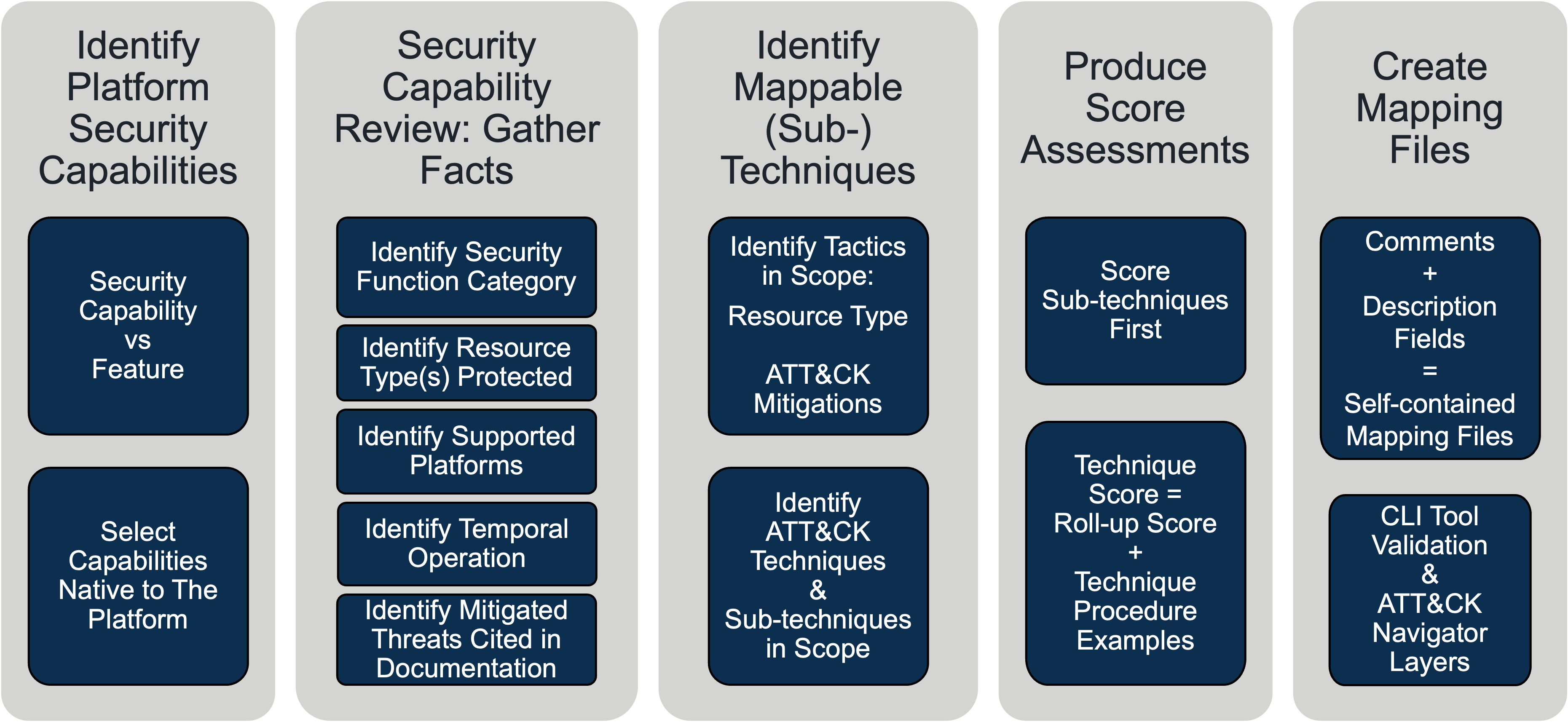This document describes the methodology used to map security capabilities native to a technology platform to ATT&CK; and aims to provide the community with a reusable method of using ATT&CK to determine the capabilities of a platform's security offerings.
ATT&CK is a globally accessible knowledge base of adversary tactics and techniques based on real-world observations. The ATT&CK knowledge base represents adversary goals as tactics and the specific behaviors employed by adversaries to achieve those goals (how) as techniques and sub-techniques. The methodology described below utilizes the information in the ATT&CK knowledge base and its underlying data model to understand, assess and record the real-world threats that security capabilities native to a technology platform are able to mitigate.
The methodology consists of the following steps:

Cyber security has emerged as an essential component of technology platforms, and consequently vendors tend to offer a variety of documentation on the security capabilities of their platform. Examine the platform documentation (e.g., security reference architectures, security benchmarks, security documentation of various services) to identify the security capabilities offered by the platform for protecting workloads on the platform. Keep the following in mind while selecting capabilities:
For each identified security capability, consult the available documentation to understand the mitigation abilities it provides. Gather the following facts about the security capability that will later help in mapping it to the set of ATT&CK techniques and sub-techniques it is able to mitigate:
After understanding the types of mitigation provided by the security capability and gathering the basic facts about its operation, as identified in the previous step, review the ATT&CK matrix and identify the techniques and sub-techniques the capability is able to mitigate.
The following may help with this process:
Identify ATT&CK Tactics in Scope
Identify ATT&CK Techniques & Sub-techniques in Scope
After identifying the techniques and sub-techniques that are mappable to the capability, use the scoring rubricto score the effectiveness of the security function (protect, detect, respond) provided by the capability in mitigating the behavior described by the ATT&CK entity.
The previous steps enabled you to gather the information required to create a mapping for a capability. Use the following guidelines to help you in the process of creating a mapping: